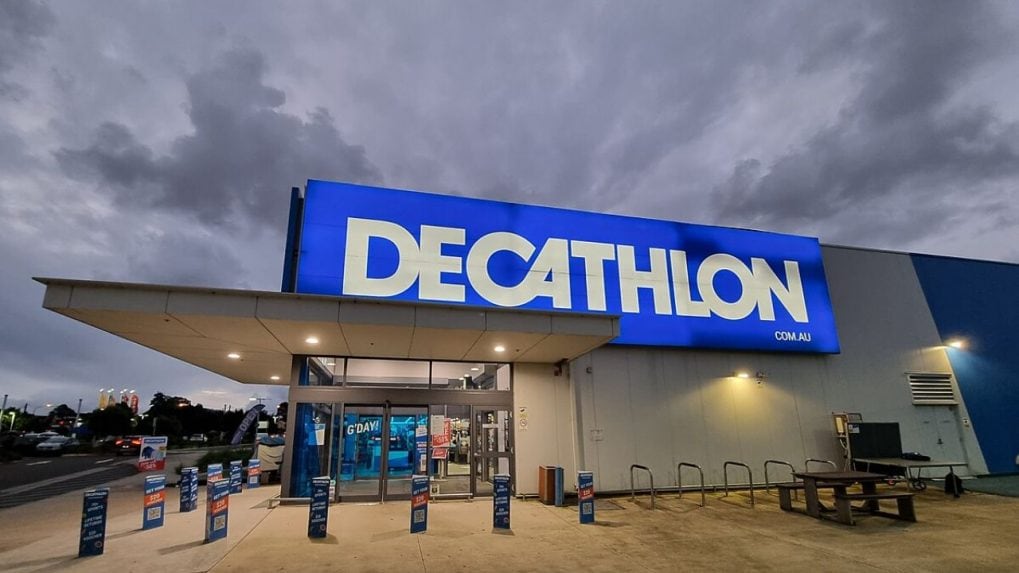Decathlon eyes 175 stores, Rs 4,100 crore revenue as India becomes key market
Decathlon India aims to double its production capacity from 8 to 15 billion units, underlining a strong commitment to local manufacturing. Currently, 70% of products sold in India are made locally, accounting for 60% of the company’s total turnover in the country.
ADVERTISEMENT
As India becomes an increasingly critical market for global retailers, French sportswear giant Decathlon is ramping up its investments across manufacturing, warehousing, retail and digital commerce in the country with focus on affordability, localization, and accessibility.
Decathlon India aims to double its production capacity from 8 to 15 billion units, underlining a strong commitment to local manufacturing. Currently, 70% of products sold in India are made locally, accounting for 60% of the company’s total turnover in the country. “84% of our revenue comes from physical stores; 10–11% from D2C and 5–6% from wholesale,” Sankar Chatterjee, CEO of Decathlon Sports India told Storyboard18.
Currently operating 132 stores across 55 cities, Chatterjee said that Decathlon plans to add 10–15 stores each year, targeting 175 stores within five years. The brand already has a strong foothold in metros and tier 2 cities like Kanpur, Solan, Lucknow, Prayagraj and Chandigarh and is now eyeing tier 3 and 4 markets. “More than the number of stores, we always focus on how much growth each store brings.”
To support the planned production boost, Decathlon is also expanding its warehouse capacity. The company operates large warehouses in Bangalore (62,000 sqm), Delhi and Mumbai, and has plans to open a new facility in Kolkata. This expansion supports both central warehousing and the rise of dark stores that serve e-commerce and quick commerce delivery models. “Four big central and regional warehouses, along with dark stores, will be our significant supply chain playing field.”
Revenue Mix and New Channel Focus
India now contributes 8% of Decathlon’s global sourcing and ranks among its top eight global markets. The manufacturing presence is spread across key regions like Punjab, Haryana, Bhubaneswar and the southern belt, all operating through a contract-manufacturing model.
Decathlon India clocked Rs 4,100 crore in revenue in FY24, with 84% coming from physical stores, 10–11% from digital (D2C) and 5–6% from wholesale. It’s increasingly betting on alternate channels like wholesale and B2B, working with over 3,000 resellers, 6,000 corporates and 2,500 institutions, especially in underserved regions. “Our B2B channel has a network of over 3,000 resellers, especially in tier 3 and 4 cities where we don’t have stores,” he added.
Interestingly, categories like cycles has led to localization. “There was a time, like 12 years ago, when only 2% of our cycles were made in India. Now, it's 98% plus.”
Quick Commerce, Not Quick Ads!
When it comes to advertising, the brand's media strategy has shifted decisively to digital, with little focus on traditional advertising. The brand is also bullish on quick commerce, partnering with Blinkit, Zepto and Swiggy Instamart to deliver sporting goods at a moment’s notice. “Quick commerce is the future. Sometimes you decide at 5 PM to play pickleball, you need that product instantly.”
In tandem, the brand is evolving its format from large-format stores on the outskirts to experience centers and compact stores in city centers like Phoenix Mall in Mumbai, Pondy Bazaar in Chennai and Cyber Hub in Gurgaon. A pilot in Bangalore is also testing sub-1,000 sq m stores that blend online and offline journeys. “Our physical store today is an experience center; our digital complements the in-store and out-of-store journey.”

